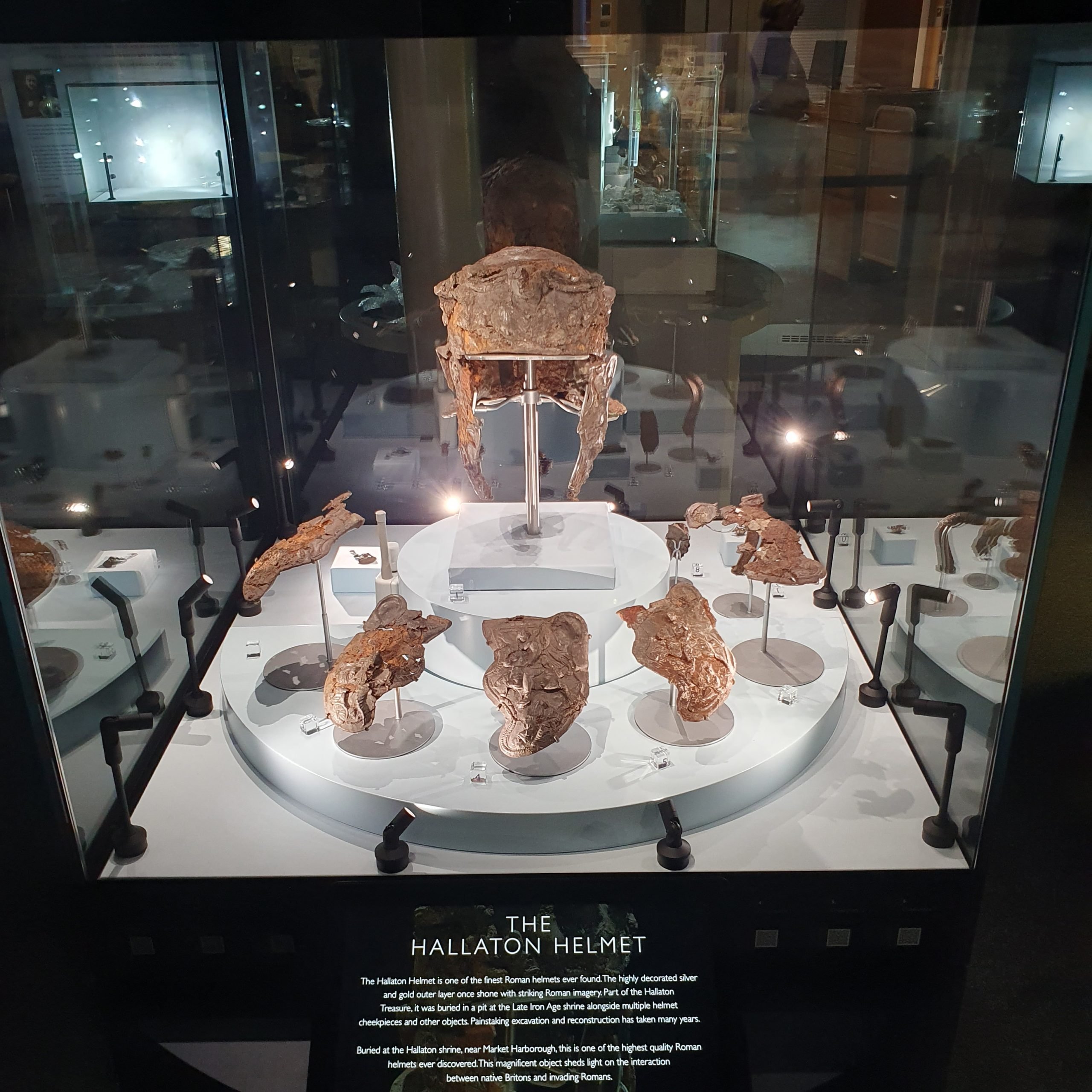
Over two decades ago, a group of amateur archaeologists stumbled upon what appeared to be an ordinary, unremarkable clump of metal in a field in Leicestershire, the U.K. Initially dismissed as a mere “rusty bucket,” this unassuming discovery turned out to be an extraordinary artifact: the fragmented remains of a 2,000-year-old Roman cavalry helmet, now known as the Hallaton Helmet.
The artifact was discovered in 2001 alongside a treasure trove of coins and pig bones near a 1st-century shrine. Today it is considered one of the U.K.’s most significant discoveries from the Iron Age. Once adorned with ornate patterns of silver and gold, the Hallaton Helmet would have graced the head of a high-ranking Roman cavalry officer during the early stages of the Roman Empire’s reign in Britain.
One of two replicas of the Hallaton Helmet commissioned by the Harborough Museum. This replica was 3D-printed. Photo: Leicestershire County Council
The helmet underwent years of meticulous restoration, with museum conservators painstakingly piecing together its parts. Now, the ancient headgear, restored to approximately 80 percent completion, has gone on view at the Harborough Museum in Leicester.
The helmet consists of a bowl, seven cheekpieces, and numerous other fragments. The cheekpieces depict an image of a Roman emperor on horseback, accompanied by the Roman goddess Victory, akin to the Greek goddess Nike. Beneath this scene, a cowering figure is depicted, possibly symbolizing a native Briton. The brow guard, designed to shield the wearer’s forehead, features a female figure, likely a Roman goddess, and adorned with multiple representations of lions.
A handmade replica of the helmet created using traditional metal-smithing techniques. Photo: Leicestershire County Council
To avoid damaging its fragile parts, museum conservators employed advanced scanning technology to 3D-print a precise replica of the helmet, crafted from resin and plated with silver and gold. A second replica was constructed using traditional metal-smithing techniques that would have been familiar to the helmet’s original Roman armorer.
The Hallaton helmet offers insights into the complex history of Roman Britain. During its era of origin, Emperor Claudius launched one of the first invasions of Britain in 43 C.E, marking the beginning of centuries-long Roman occupation. While the elite of Roman society embraced their conquerors’ culture, the native population retained elements of their Celtic heritage, living in traditional Iron Age homes and speaking their native language. Experts believe the helmet’s date could indicate that it belonged to Celtic tribes who served the Roman army.
The Hallaton Helmet will join the permanent exhibition at Harborough Museum alongside the other finds from the site, which include silver ingots, coins, and other ritual deposits.